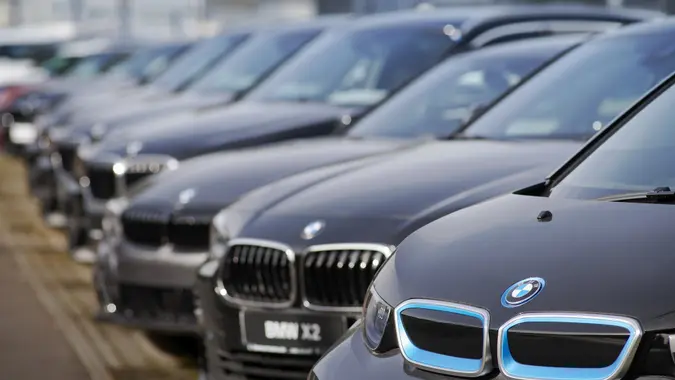1. Start with the 20/4/10 rule
So what is the 20/4/10 rule? It's a general guideline to help you decide how much you should spend on your car. They may not fit all budgets or specific situations, but they are a good starting point to start considering a car. According to Capital One, the 20/4/10 rule helps determine how much car you can buy if it meets the following requirements:- 20: You can put at least 20% on your car.
- Four: The car can be paid off in 48 months (4 years) or less.
- Ten: Your total monthly car expenses, including car payments, maintenance, gas, insurance, etc., should not exceed 10% of your monthly income.
2. Know your credit score
Your credit score affects your ability to borrow money. The higher your credit score, the lower the interest you'll receive on your car loan, and if you're paying a higher interest rate, the difference between your monthly payments can be quite large. This is especially true given the reach, reports JD Power. As an example, credit bureau Experian announced that in the second quarter of 2022, borrowers with a super prime credit score (above 720) will be offered interest rates of 2.96% for new vehicles and 3.68% for used vehicles. I said I paid. At the other end of the spectrum is Deep with 579 or less of his subprime renters, where he was charged 12.84% on new vehicles and 20.43% on used vehicles.example
Let's say your credit score is 650, which puts you in the middle of the scale. Non-prime borrowers (scores 620-659) paid him 6.57% interest on new cars, while the average new car he paid was 10.33%. According to Experian's car finance calculator, if he borrowed $20,000 to finance the purchase of the car, his monthly payments for four years would be about $475. If your credit score allows you to borrow at the best rate, you'll be paying about $442 per month. at the highest rate? About $535. And look at the $93/month difference in the long run. This is pure interest. That means you'll pay about $4,500 more in interest over the four-year term of the loan than you would have if you met the minimum interest rate.find your credit score
The easiest way to check your credit score is to check your credit card statement. Most credit cards offer credit score monitoring as a free service. You can also get a credit score from one or more credit bureaus such as Experian, TransUnion, Equifax, etc., but they often charge a fee for frequent checks.Tips
If you can wait a little longer before buying a car, make an effort to improve your credit score. This includes paying the balance of
3. Do research
Determine what kind of car you can realistically afford based on your credit score. 20/4/10 Back to the rules. If you bring home $4,200 a month after taxes, your car should not cost more than $420 a month. This includes gas, tolls, maintenance and insurance. Reflect on how much money you've spent on these categories over the past few months and make an estimate. Your upkeep costs less than you paid to keep that old car running. If you get a figure of $150, you can afford to pay $270.
car loan calculator
Armed with your research, now turn to reverse auto loan calculators like those offered by Autotrader. Enter how much you'd like to pay for the car, the interest rate you're expected to pay (a quick Google search will show you the average interest rate on your credit score), and your local sales tax rate. Type in a number to see how much car loan you have available. Adding a down payment you can make will give you a rough idea of the car sticker price you can afford.find a car
If, after using the calculator, you find that the $25,000 price is your goal, keep researching. Do you have a preferred manufacturer? For example, if you need a Kia, check your local Kia dealer's website to find cars for sale under $25,000. Check prices, find out how much to pay extra for a particular add-on, and narrow down your options from the comfort of your own home. Look for current specials while visiting the dealer's website. You may find deals on pricing and financing that help you buy higher tiers.4. To lease or not
If car affordability has reached its limit, leasing is an option. You'll have a lower down payment and lower monthly payments, which is a big plus, but remember that leasing has strict mileage limits and you'll have to return the car after a certain number of months. And restart the process. For example, compare leasing and buying a Kia Soul in 2023. Kia is promoting the Soul LX for 36 months with a monthly fee of $229 and $2,870 at signing. Monthly payments sound great, but per mile she is limited to driving 10,000 miles per year before incurring a 20-cent excess mileage charge. The mileage allocation happens quickly, so this lease is not very good value.remove
Before going to the dealership, it's a good idea to do some homework to determine an affordable price for the car and an amount you're comfortable with spending each month. I don't want to be short of cash because of my car.Our in-house research team and local financial experts work together to create accurate, fair and up-to-date content. We fact-check all statistics, quotes and facts using key reputable resources to ensure that the information we provide is correct. You can learn more about the GOBankingRates process and standards in our editorial policy.
